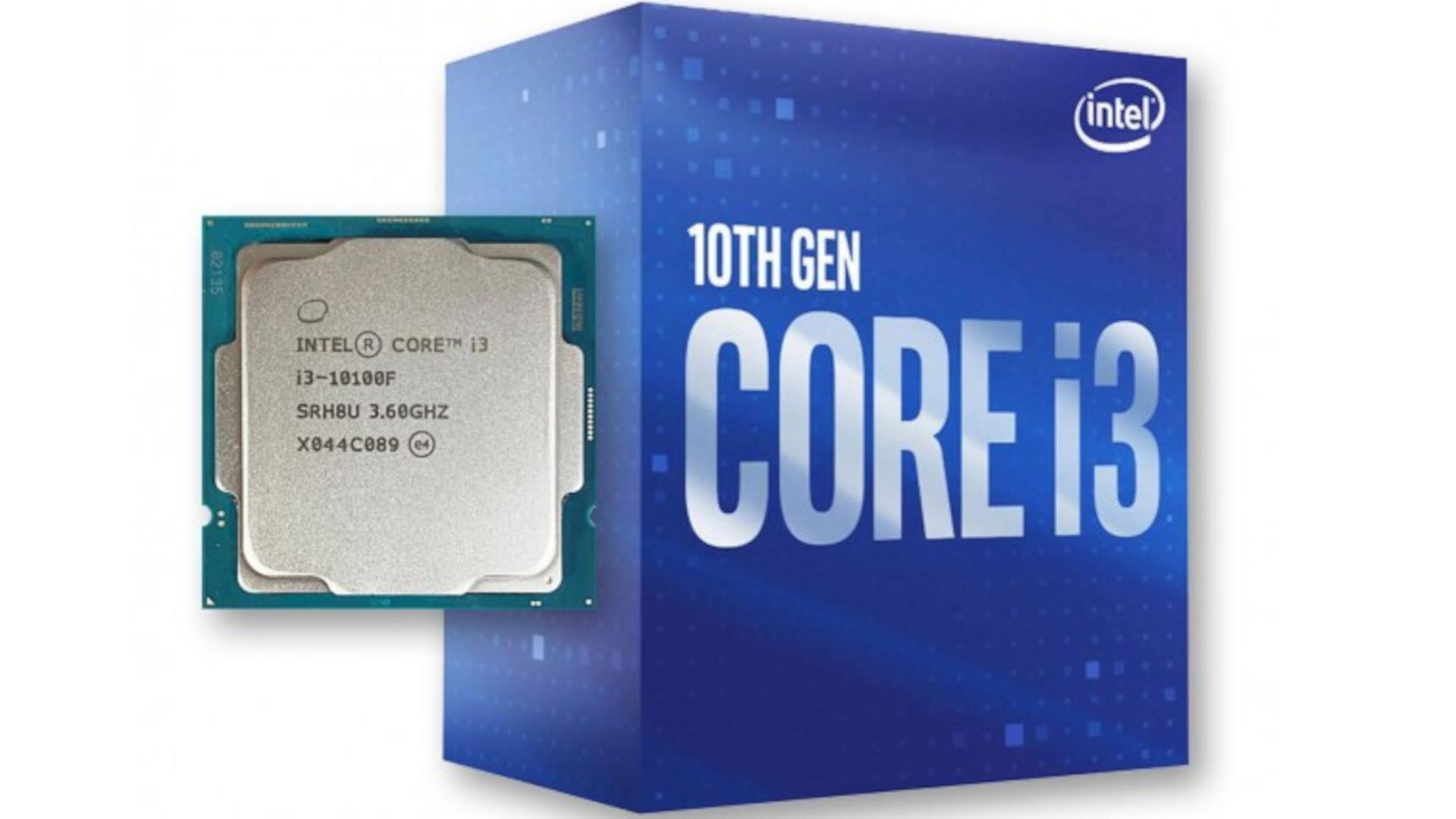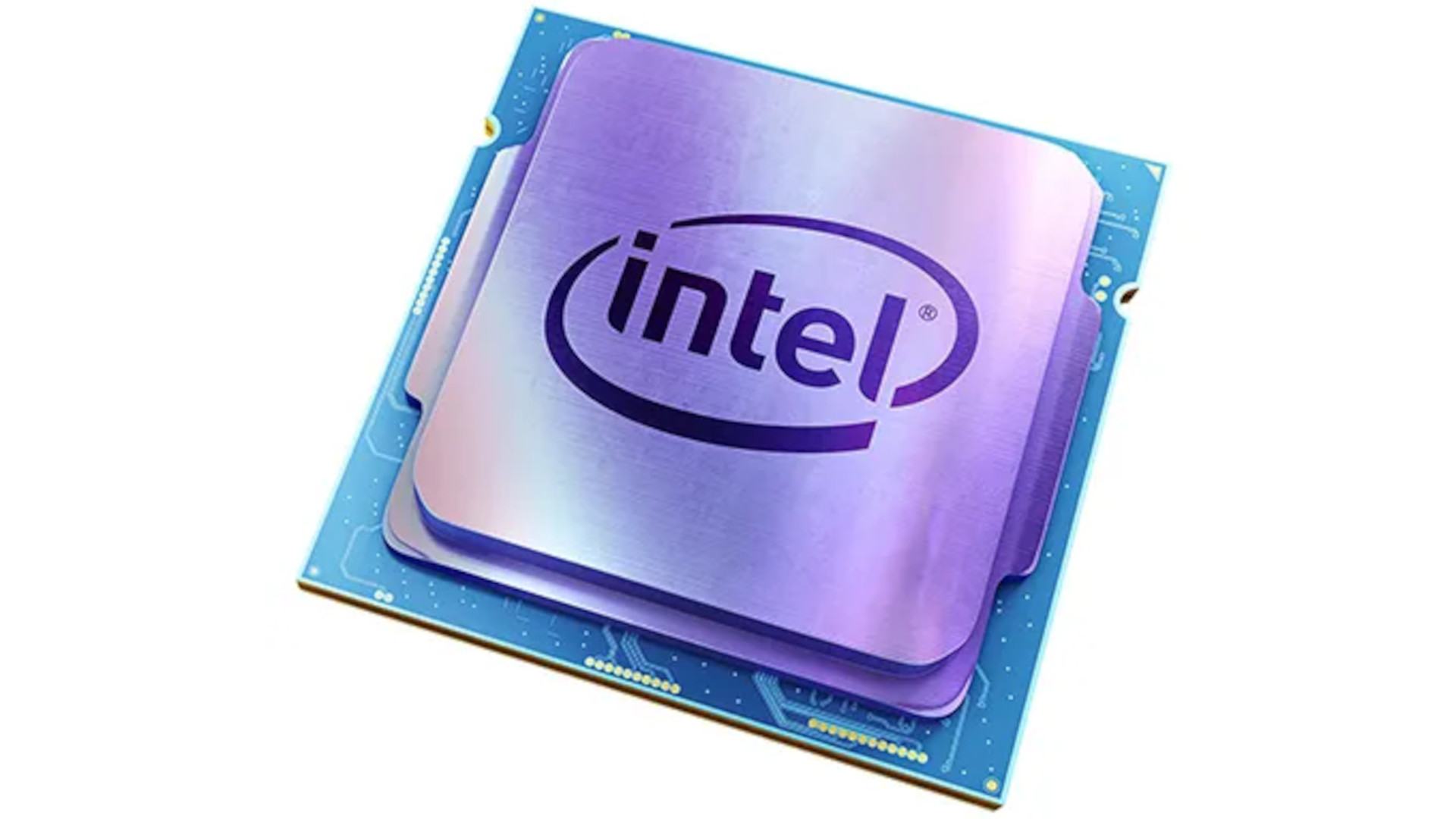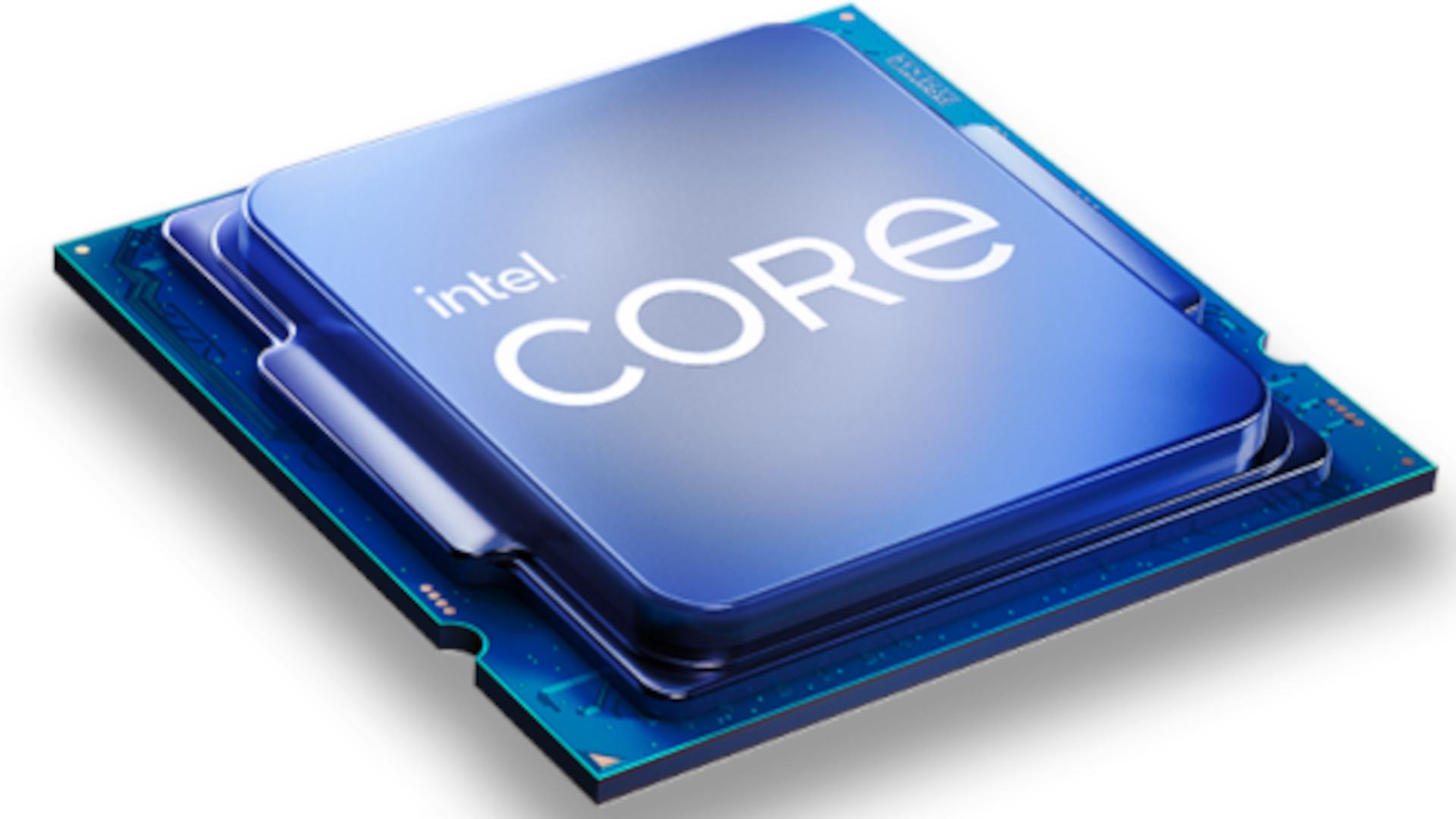The Intel Core i3 10100F, a processor that wasn’t included in Intel’s first 10th Generation Comet Lake-S launch, has now been added on its ARK website. Even while the chip isn’t yet included in the company’s master price list, it is well-suited to compete with AMD’s Ryzen 3 3300X, which has been virtually absent from retail outlets since its release five months ago.
The Intel Core i3 10100F is in line to unseat older low-cost gaming leaders. The four cores and eight threads on the 14nm Comet Lake chip have a base clock speed of 3.6 GHz and a boost clock speed of 4.3 GHz. Budget builders may like the quad-core part’s relatively modest cooling requirements of 65W TDP (thermal power design).
The Intel Core i3 10100F does not have integrated graphics, as the “F” prefix in the model name suggests. Since it is designed for gamers who would most likely connect the processor with a discrete gaming graphics card, the processor won’t miss it in any case. The Core i3-10100F is expected to cost between $79 and $97 at retail, although Intel doesn’t specify when the quad-core processor will be available.
Intel Core i3 10100F Specs
The Intel Core i3 10100F under examination is based on Intel’s “Comet Lake” microarchitecture and was constructed using their current 14 nm++ silicon production process. These chips have the same per-core performance (IPC) as “Skylake” from 2016. With its four cores and HyperThreading, the Core i3-10100 may operate as eight logical processors.
Only 6 MB of L3 cache, however, is used to cushion these four cores. Historically, Intel used 6 MB of cache on 4-core/4-thread Core i5 SKUs while saving 8 MB for the 8-thread Core i7 components (7th generation and earlier). With the tenth generation, Intel is experimenting. The Core i3-10300 and Core i3-10320 are somewhat more expensive models that have 8 MB of cache and marginally faster clock speeds compared to the Core i3-6 10100’s MB.

The i3-10100 runs at a frequency of 3.60 GHz and can boost to a maximum of 4.30 GHz. The Intel UHD 630, which is based on Gen 9.5 and has a maximum clock speed of 1.10 GHz, is also included as an integrated graphics option.
The Core i3-10100 competes against the recently released AMD Ryzen 3 3100 CPU, which costs $100, and the Ryzen 3 3300X, which costs $120. Both are “Zen 2” microarchitecture-based 4-core/8-thread components with big 16 MB L3 caches and useful upgrades like PCIe gen 4.0 and an unlocked multiplier.
Both chips received praise from experts for their outstanding performance for the money when used for gaming. In our Core i3-10100 evaluation, we will pay particular attention to the two SKUs because of this. It will be fascinating to see if Intel’s $130 offering will sway the e-sports and budget gaming PC crowd away from AMD. It’s also worthwhile to investigate whether purchasing a Core i5 processor still makes sense for business computers that are mostly used for web browsing, MS Office, etc.
The 4-core “Comet Lake-S” silicon used in the Core i3-10100 was constructed using the same 14 nm++ process as the previous two versions. It is estimated that the die area is 125 mm2. This die resembles the 4-core “Kaby Lake” die in appearance. The 6-core “Comet Lake-S” die might also have certain steps removed by turning off two of the cores and half of the L3 cache.
Similar to the previous four generations of Intel mainstream processors, the “Comet Lake-S” silicon is organized into two rows of CPU cores, with an integrated northbridge (system agent) on one side and an integrated graphics processor (iGPU) on the other. A Ringbus Interconnect acts as a hub for communication between the various parts. The last-level cache is distributed across the system in the form of slices, totaling 6 MB of unified L3 cache that all cores can access.
The System Agent, which houses the memory controller, PCI-Express gen 3.0 root-complex, DMI interface, and memory PHY, contains the majority of the processor’s non-core components. Despite being built into the silicon, Intel has permanently blocked the iGPU solution.
The Gen 9.5 integrated graphics, which has essentially been used for the last three generations, is on the other end of the ringbus and has 24 execution units in GT2 trim. The top GT2 trim appears to be present on all SKUs in the desktop 10th-generation processor series. The “UHD” label just denotes that the IGP can support 4K Ultra HD screens, has contemporary connecting choices like DP 1.4 and HDMI 2.0, and can playback 4K video in new formats with 10-bpc color and HDR10/Dolby Vision standards. Don’t expect to play PUBG at 4K on this.

Essential information
| Product Collection | 10th Generation Intel® Core™ i3 Processors |
| Code Name | Products formerly Comet Lake |
| Vertical Segment | Desktop |
| Processor Number | i3-10100F |
| Status | Launched |
| Launch Date | Q4’20 |
| Lithography | 14 nm |
| Recommended Customer Price | $107.00 – $117.00 |
| Use Conditions | PC/Client/Tablet |
Intel Core i3 10100F specifications
| Total Cores | 4 |
| Total Threads | 8 |
| Max Turbo Frequency | 4.30 GHz |
| Intel® Turbo Boost Technology 2.0 Frequency | 4.30 GHz |
| Processor Base Frequency | 3.60 GHz |
| Cache | 6 MB Intel® Smart Cache |
| Bus Speed | 8 GT/s |
| TDP | 65 W |
Memory specs
| Max Memory Size (dependent on memory type) | 128 GB |
| Memory Types | DDR4-2666 |
| Max # of Memory Channels | 2 |
| Max Memory Bandwidth | 41.6 GB/s |
Intel Core i3 10100F performance & gaming
Despite the fact that the Intel Core i3 10100F isn’t intended to be a multi-threaded rock star on this specific stage, some of the tests are nevertheless significant performance indicators for users who frequently complete single-threaded jobs.
Depending on the benchmark, the Intel Core i3 10100F looked to struggle versus its predecessor, the Intel Core i3-9100, on single-threaded tasks, which was strange. Despite having four additional threads to work with than the i3-9100, the i3-10100 wasn’t able to consistently outperform the chip it is intended to replace.

And that’s without mentioning the thrashing the Ryzen 3 3300X gives the i3 10100F. (The fact that you can actually purchase a Core i3 without paying a search party to find one works in its favor.) Nevertheless, depending on the run, it is able to match or surpass the performance of the AMD Ryzen 3 3200G with Radeon Vega IGP, making that processor a more fair comparison.
Final thoughts on Intel Core i3 10100F
The Core i3-10100F, which replaces the Core i3-9100 and retails for about $130, is a good upgrade, but AMD’s recent Ryzen 3 shipments are putting a lot of pressure on it. The Ryzen 3 3100 is not significantly slower and only costs $100.
Better application performance is available from the $120 Ryzen 3 3300X, and gaming FPS is “near enough.” The Core i3-2666 10100’s MHz RAM penalty affects gaming performance to lag even the Ryzen 3 3300X when it is put on a less expensive motherboard. AMD Ryzen is the superior choice unless Intel can reduce the cost of the Core i3-10100F to under $100.

Is Intel Core i3-10100F worth it?
In order to locate the most affordable new CPU for gaming, you look at AMD’s possibilities. The Ryzen 3100 and 3300X don’t appear to exist, nor can you get any 4th generation APUs, and even a 2200G costs £135 at the moment. Although a 1600 AF is theoretically available for £137, that price is still rather steep and represents an older model. Team blue, then. The Intel i3 10100 and 10100F, which have 4 cores and 8 threads with a maximum boost speed of 4.3GHz, are available for at least £100. So it would seem to be your greatest choice, right?
Quick response: Yes. There isn’t much better at this pricing point, but it is a reliable CPU. This means that your overall system, not simply the CPU, determines what is best for you. A RX 5700 and a Intel Core i3-10100F go along nicely, while an RX 6700 might not.
The Intel Core i3-10100F is about as low as I’d suggest for gaming right now; 4 cores, specifically for recent games, is becoming the least you’d want, and at the same price as the motherboard you’ll need for it (a B460 or H410), it’s quite simple to recommend.
Beyond its immediate effectiveness, it does have certain shortcomings. Intel was on a mission for this generation to eliminate any features that weren’t absolutely required and sell them back to you in “K” SKU goods. This included setting your RAM speed to anything beyond their spec frequency, which for i3 and i5 processors is 2666MHz. So even after setting the XMP profile on it, it still only operated at 2666MHz, despite the fact that I was using a small 3200MHz kit.
Is Intel Core i3-10100F good for gaming?
Yes, the Intel Core i3-10100F is a fantastic gaming CPU, especially for gaming rigs on a tight budget. It is a capable CPU for the majority of contemporary games with a base clock speed of 3.6 GHz and a peak speed of 4.3 GHz. In order to handle multi-threaded applications like gaming, it additionally contains 4 cores and 8 threads.
The i3-10100F can run the majority of games on 1080p resolution with medium to high settings. However, if used in conjunction with a lower graphics card, it could have trouble with more demanding games or tasks that need a lot of graphics.
Overall, the Intel Core i3-10100F is a fantastic option if you’re constructing a cheap gaming PC and searching for a CPU that’s both reasonable and powerful. However, you might want to think about a higher-end processor if your budget is bigger or you want to perform more CPU-intensive jobs.
When used in conjunction with a GPU that is sufficiently potent, such as an RX 6600 or RTX 3050, the Intel Core i3-10100F is a capable gaming CPU that can enable 60 frames per second gameplay in the majority of modern games.
However, occasionally you could find it difficult to keep constant framerates or experience stutters. It’s difficult to argue against the processor’s very subpar specifications.
The 10100F doesn’t provide you with the most adaptability since while having 4 cores and 8 threads, it struggles to handle multithreaded applications effectively.
The 4.3GHz peak speed is respectable, especially for a 2020 CPU, but the 6MB L3 cache is unexceptional, which results in generally subpar single-thread performance.
The Intel Core i3-10100F is a suitable CPU for gaming. If your expectations are reasonable, you won’t be dissatisfied. Although some may do so more so than others, most games will run smoothly at 60 frames per second.
Can you overclock Intel Core i3-10100F?
We were unable to test the Intel Core i3-10100F performance without Intel’s anti-overclocking restraints since it is a non-“K” chip, which means it is “not overclockable.” The Ryzen 3 3300X and its unlocked clock speed will be the way to go if you want to overclock a CPU at this level.
Since the Intel Core i3-10100F lacks the “K” suffix, as was previously explained, its multiplier is locked, making it impossible to alter the CPU frequency to whatever you choose.
On most motherboards, the BCLK frequency may be raised above its default of 100 MHz, much like on earlier Intel CPUs. As BCLK x Multiplier = CPU Frequency, this leads to a higher overall CPU frequency.
Intel marketing made some fuss about the new capability to independently modify BCLK from PCIe clock with Comet Lake, and more especially Z490. Since all locked CPUs measure the BCLK they are operating at and simply refuse to boot if BCLK is 103 MHz or above, this really has no effect on non-K processors.
That is why the BCLK is set to 102.9 MHz for our maximum overclock. Even if the frequency is officially below 103 MHz, you’ll frequently have a hang at POST if “102.99” is put in the BIOS since the measurement isn’t 100% accurate.
The power limitations for our “Max Turbo” and “Max Turbo + 103 BCLK” runs were also raised. The default values for the limitations are PL1 = 65 W and PL2 = 90 W; for these two tests, we upped those values to the maximum; nevertheless, this did not result in any more performance because the processor’s factory power restrictions are sufficient.
The multiplier on the Intel Core i3-10100F is locked, making overclocking impossible.
What temperature should an Intel Core i3-10100F run at?
The Intel Core i3-10100F never exceeded a comfortable 46 degrees C during our tests, but it’s important to note that our cooling system was much too powerful for the task. Since utilizing the OEM cooler is outside of our normal testing procedures, we didn’t perform any tests on it. As a four-core CPU, the Core i3-10100 is unlikely to cause your system to go off anytime soon if you allow for even a little ventilation.
How much power does Intel Core i3-10100F draw?
The Intel Core i3-10100F is on line to unseat older low-cost gaming leaders. The four cores and eight threads on the 14nm Comet Lake device have a base clock speed of 3.6 GHz and a boost clock speed of 4.3 GHz. Budget builders may like the quad-core part’s comparatively modest cooling requirements of 65W TDP (thermal power design).
My experience has shown me how important it is to precisely calculate the wattage of the power supply required for both your CPU and other components. The Core i3-10100F CPU’s peak power may be calculated using the peak TDP rating, PL2 (Power Level 2). The power used at the CPU’s highest turbo boost frequency is measured by the turbo boost TDP (PL2). Based on the PL2, we may infer that the Intel Core i3-10100F CPU can operate at a maximum boost frequency of 4.30 GHz for 90 watts.
Intel Core i3 10100F
-
Performance - 94%94%
-
Price - 97%97%
-
Value - 96%96%

